Web3: The Future of the Internet Explained Simply

Technology
The internet is evolving. You might have heard buzzwords like Web3, blockchain, decentralized applications (dApps), or DeFi thrown around—and wondered what they all mean. If so, you’re not alone. The transition from the traditional internet to Web3 can feel overwhelming with all the new jargon.
But Web3 is poised to reshape how we interact online, making the internet more open, transparent, and user-centric. Let’s break it down, without confusing tech talk.
What Is Web3?
Web3 refers to the next generation of the internet, built on blockchain technology. Unlike the current web (Web2), where data and applications are mostly controlled by centralized companies (Facebook, Google), Web3 emphasizes decentralization, where power and control move from centralized entities to the users themselves. This approach promises greater privacy, security, and ownership of your data and digital assets.
The Building Blocks of Web3
- Blockchain Technology
At the heart of Web3 is blockchain, a distributed ledger that records transactions transparently and securely. This is like a digital spreadsheet shared among many computers worldwide, where every transaction is recorded and verified by a network of participants instead of a single authority.
- Decentralized Applications (dApps)
dApps are applications that run on blockchain networks rather than centralized servers. Unlike traditional apps controlled by single companies, dApps operate on peer-to-peer networks. This means users often get more control, privacy, and transparency.
For example, instead of relying on a bank or an online marketplace, you might use a dApp that connects you directly with others for financial transactions or commerce, cutting out middlemen.
- Decentralized Finance (DeFi)
DeFi represents financial services built on blockchain technology. It eliminates traditional intermediaries like banks and brokers, enabling anyone with an internet connection to borrow, lend, trade, or invest without relying on centralized institutions. DeFi platforms use smart contracts—self-executing code that automatically enforces agreements—to operate more efficiently and transparently.
- Gas Fees
Gas fees are transaction costs paid to blockchain miners or validators to process and confirm transactions. For example, when using Ethereum-based dApps, users pay a small fee to incentivize network participants to validate and secure the network.
Real-World Web3 Use Cases
To understand Web3’s potential impact, let’s look at some of Web 3’s most popular use cases:
Insurance
Traditionally, insurance claims involve mountains of paperwork, long verification processes, and delays. But with Web3, smart contracts can automate claims processing. For example, a smart contract linked to weather data could automatically compensate farmers affected by drought or release travel insurance payouts when flights are canceled—instantly, without human involvement. This cuts bureaucracy, speeds up settlements, and reduces costs.
Supply Chain Management
Web3 improves product traceability and transparency by recording every transaction or movement on an immutable ledger. This enhances food safety, authenticates luxury goods, and combats fraud.
Non-Fungible Tokens (NFTs)
NFTs are unique digital assets recorded on the blockchain, certifying ownership and authenticity. They revolutionize art, music, gaming, and real estate markets by enabling creators to sell directly to consumers and allowing fractional ownership of high-value items.
Metaverse and Virtual Real Estate
The metaverse integrates Web3 for virtual worlds where users buy, develop, and monetize digital land and assets. Blockchain-powered NFTs and cryptocurrencies underpin ownership and commerce in these immersive, interconnected 3D spaces.
Healthcare
Web3 secures medical records on blockchains, enabling patients to control their data securely while sharing it with providers as needed. Smart contracts streamline insurance claims and clinical trials, improving efficiency and reducing fraud.
Decentralized Autonomous Organizations (DAOs)
DAOs are member-owned communities that use blockchain voting and governance mechanisms to make collective decisions transparently, removing traditional hierarchical management structures.
3D-enabled Remote Workplaces
Web3 supports virtual offices and collaboration spaces with immersive 3D environments, where blockchain secures data sharing and smart contracts manage operations. This enables more interactive and secure remote work experiences.
Why Should You Care About Web3?
Web3 aims to put you back in control. Your data, digital identity, and assets belong to you—not centralized platforms that profit from selling your information. This can fundamentally change how we engage online, from social media and gaming to finance and beyond.
The promise is an internet that’s more:
- Open — anyone can participate without permission.
- Transparent — actions and transactions are publicly verifiable.
- User-Owned — control of data and assets belongs to users.
How to Get Started in the Web3 Landscape
Diving into Web3 can be intimidating, but you don’t need a computer science degree to get involved. Resources like this guide and communities such as Fat Pig Signals offer expert insights and practical strategies to help beginners learn about crypto, blockchain, and decentralized finance.
Before diving in, remember:
- Conduct thorough research before investing.
- Never treat Web3 content as financial advice.
- Consider consulting qualified financial advisors.
- Keep up to date with evolving technologies and projects.
The Web3 Challenges — Scalability, Security, and User Experience
The hype around Web3 can make it sound like we're already living in a decentralized utopia where banks are obsolete and users own their data. The reality? We're still in the early stages, and several critical challenges are slowing down widespread adoption.
Scalability Trilemma
Imagine trying to buy an NFT during a major drop, only to find that the transaction fee is higher than the NFT itself. This is the scalability problem in action especially on networks like Ethereum during peak congestion.
This challenge stems from the blockchain trilemma: optimizing for security, decentralization, or scalability—but not all three at once.
- Bitcoin handles ~7 transactions per second
- Ethereum processes ~30
- Visa handles ~65,000+
Various solutions are emerging:
- Layer 2 networks (e.g., Polygon)
- New architectures (e.g., Solana, Avalanche, Polkadot)
However, all come with trade-offs. Some boost speed but reduce decentralization. Others increase scalability but introduce new security risks.
Security Risks
Web3’s promise of self-custody is powerful but also dangerous. In traditional finance, mistakes can be fixed. In Web3, one lost key means permanent loss of funds.
Security challenges include:
- Loss of private keys / seed phrases
- No customer support or password reset
- Smart contract exploits — $3B+ was lost in DeFi hacks in 2022 alone
Even audited smart contracts have been exploited. And the average user is still vulnerable to phishing attacks, poor wallet hygiene, and accidental permissions.
User Experience
Using Web3 apps today is like using the internet in 1995. To interact with DeFi, a user typically needs to:
- Set up a wallet (e.g., MetaMask)
- Buy and transfer cryptocurrency
- Connect to a dApp
- Approve token permissions
- Pay unpredictable gas fees
Each step introduces potential for error or confusion. Add to that a sea of jargon: liquidity pools, impermanent loss, gas limits, slippage, and more. For most users, it’s overwhelming.
Regulatory Uncertainty
One of the greatest unknowns in Web3 is regulation. Around the world, governments are still scrambling to define how to deal with crypto assets, DAOs, NFTs, and decentralized finance. In the U.S., the SEC’s stance remains inconsistent. Enforcement actions often arrive before formal guidance, leaving developers and investors guessing.
Environmental Concerns
Web3’s environmental impact, especially from proof-of-work blockchains like Bitcoin, is a growing concern. High energy usage has led to backlash, especially from ESG-conscious institutions. While Ethereum’s move to proof-of-stake reduced its energy consumption by over 99%, public perception remains an obstacle.
Conclusion
Web3 represents a paradigm shift—moving from centralized platforms to decentralized networks where users reclaim control of their online lives. Its core technologies like blockchain, dApps, and DeFi promise to make the internet more transparent, efficient, and fair. While the space is complex and still evolving, understanding these foundational concepts will prepare you for the future digital landscape.
If you want expert guidance in navigating the world of crypto and Web3 without drowning in technical charts, engaging with supportive communities and trusted sources can make the journey easier and more rewarding.



